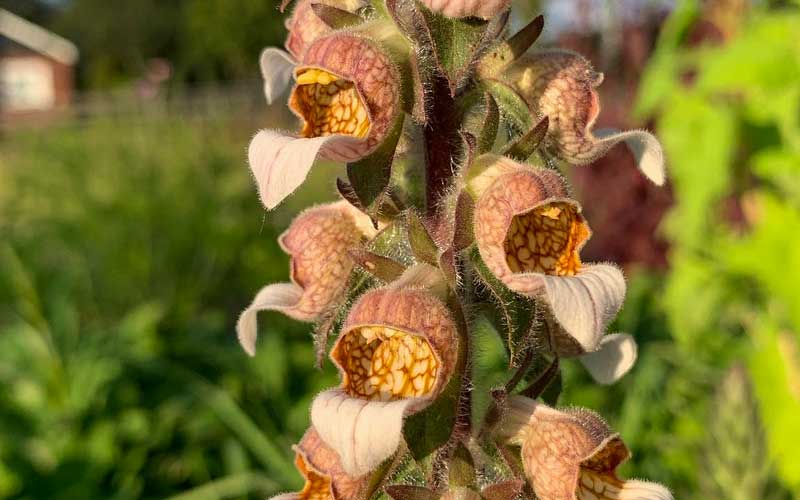Foxgloves (Digitalis) are among my top picks to have in the garden. Not only do they add elegance as a garden plant, but they’re also perfect for picking. They remind me of enchanting fairy hats and fit seamlessly into an English cottage garden setting. They’re straightforward to grow from seed, bloom repeatedly throughout the summer, and require minimal care – just what any gardener would want! Keep reading to learn exactly how to grow, care, and harvest your own foxgloves!
Is foxglove a perennial?
Most varieties of foxgloves (Digitalis purpurea) are typically seen as short-lived biennials. In their first year, they primarily produce leaves, and then they burst into bloom early in the subsequent summer. But there are a few “first-year flowering” types, which are perfect for cut flowers or for impatient gardeners like me. A top first-year bloomer that I can’t recommend enough is ‘Dalmatian Peach‘. Some varieties live a bit longer, almost acting like short-lived perennials. Examples include Digitalis ferruginea, Digitalis ambigua, and Digitalis lanata. Of these, the most striking one I’d suggest trying out is the Café Crème (Digitalis lanata). I added a picture for you so you see why I like them so much.

How to sow and care for foxgloves
Growing foxgloves from seed is quite straightforward. I sow twice a year: once in August and then in early spring, roughly 10 weeks before the last frost. Since the seeds need light to germinate, I surface sow them on damp soil in deep 40-cell trays. After sowing, I make sure to water them from the bottom, so the seeds don’t wash away. Germination can take a bit of patience, so don’t get discouraged too quickly. They germinate best at temperatures ranging from 59 to 68°F (15 to 20℃). After they sprout, I nurture them in cool and light conditions until they fill out their pot or cell.
Foxgloves that are sown in autumn and that have been in the ground for over a year usually start to bloom by the end of May or early June. To get the best out of all foxgloves, it’s good to regularly harvest them (or remove the spent stems), keep the soil sufficiently moist (especially in summer) and occasionally treat them with some mild liquid plant fertilizer to encourage more blooms. They thrive in humus-rich, moisture-retentive soil, but in essence, they’ll grow in most soil types.

An essential thing to bear in mind is that all parts of the foxglove plant and flower are highly toxic. Never use foxgloves as cake decoration! And always be wary with them around young children.
I hope I managed to convince you to try foxgloves yourself! If you have any further questions about growing them from seed, don’t hesitate to ask!
Happy gardening!
Nicole


